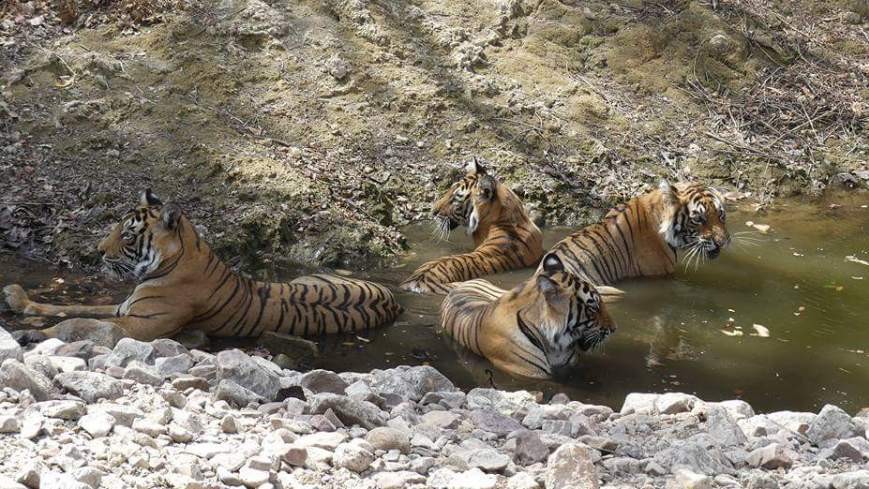Ranthambore Tiger Reserve is located in Sawai Madhopur district of south-east Rajasthan and It is the fourth largest national park in northern India, now Ranthambore Tiger Reserve is ready to become a nursery of tigers in Rajasthan.
History of the Ranthambore
– In 1955, Ranthambore was established as the Sawai Madhopur Game Sanctuary by the Government of India.
– In 1973, Ranthambore was declared as Project Tiger Reserve.
– In 1980, Ranthambhore became a national park.
– In 1984, the adjoining forest areas of the Ranthambhore were declared the Sawai Man Singh Sanctuary and Keladevi Sanctuary.
– In 1991, Ranthambore Tiger reserve was expanded to include Sawai Man Singh and Kaldevi Sanctuary.
Ranthambore's hosts tiger
Ranthambore Wildlife Sanctuary is famous for its Bengal Tiger in the world. Ranthambore National Park is one of the best places in India to see these wild animals in their natural forest habitat. In the history of Ranthambore Tiger Reserve RTR, the highest number of tigers has been recorded in the park. According to Forest officials, today there are total number of tigers is 67 in the Ranthambore Park. Among them, there are 21 male Tigers and 20 female Tigers with 26 cubs, which are going beyond the carrying capacity of the park, along with the tigers staying in the surrounding. Ranthambore tiger population news source – TOI
If we look at the current situation of Ranthambore, we will know that today there are three Tigers including T-72, T-80 and T92 from Ranthambhore Tiger Reserve have naturally strayed out in Keladevi Wildlife Sanctuary (Karauli district, Rajajasthan) among them one is female tiger and two are male tiger. We can add also one black-striped feline that is known as t-91, recently, this male tiger has reached Ramgarh Vishadhar Wildlife Sanctuary, Bundi, where it is continuously being tracked by the Forest Department. Tiger T-47 who had strayed to the Bhid in the Bans River area, it is said to have returned to Ranthambore Tiger Reserve. Besides, the number of tigers who wanders in Madhya Pradesh is not properly known. Now three tigers will be trans-located to Mukundra Hills Tiger Reserve (Darrah) by the state government soon, and NTCA permission to relocate one more tiger into Sariska Tiger Reserve (STR) is long pending. Even in the hind sight too, when in 2005, Sariska Tiger Reserve became the first protected wildlife sanctuary to poaching all its tigers, and then some tigers from Ranthambore were relocated to Sariska, thus, Ranthambore tigers revived the Sariska Tiger Reserve (STR).
In 2008, tiger reintroduction plan started and under this plan from 2008 to 2013, eight tigers were brought from Ranthambore to Sariska Tiger Reserve. The Tigres ST-9 and ST-10 were the last tigers which are relocated from Ranthambore national Park to Sariska in 2013. At present, there are total 13 tigers in Sariska tiger reserve including 7 female, 2 males and 4 cubs.
Ranthambore and other Reserves are considered to be similar. Since both reserves habitats are part of semi arid areas in Aravali Mountain. Therefore, Ranthambore Tiger will be the best option for maintaining the specificity of genetic stock of tigers in the semi arid area and Tigers of Ranthambore have so far repopulated the other Tiger reserves in Rajasthan.

